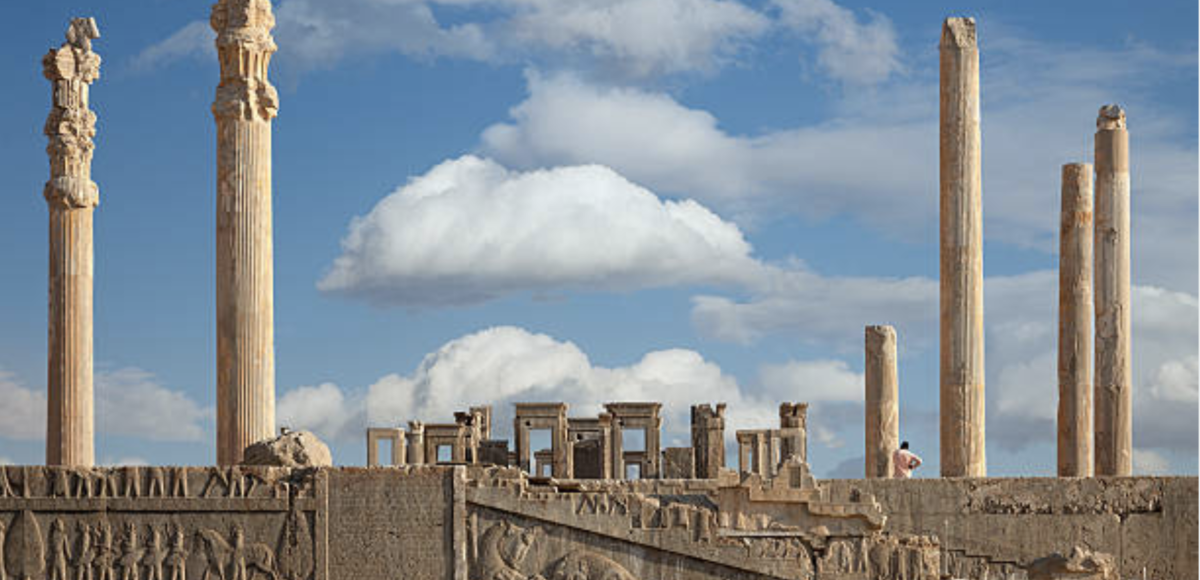“This was the audience hall of the great Persian Empire?”
During my long awaited visit to the Apãdana at Persepolis, I was initially taken aback by what little remained of one of the most valuable buildings within the Persian Empire. Despite this shock, I was amazed by the fourteen towering columns and grand staircases that represent the legitimacy of its magnificent foundation. With missing pieces of the reliefs and no roof, I turned towards the internet to find out exactly what the Apãdana looked like in the early sixth century B.C.E. and to piece together the deeper meaning of what remains…

All that Remains: Constructing the Bigger Picture
While the majority of the tourists around me spent their time taking pictures next to the bases of the columns, I focused my attention towards the great animals that sat atop them. I was constantly aware of the intimidating presence of these predatory animals above me: twin-bulls, eagles, and lions. Peaking through the crowd of people, I noticed the relief sculptures of the stairways, which detail a procession of people and dignitaries that all bear gifts for the Persian king. Both the north and east stairways clearly indicate that these people came from a wide variety of nations, due to their different types of clothing that are suggestive of their country of origin. Through my research on the Apãdana, I learned that all of these people were walking towards the original central scene, the king, who sits in a throne yet is larger than everyone around him. The registers accentuate this systematic rhythm in which everyone is being drawn to the king. For the entirety of time I was there, I was captivated by the great control, authority, and strength that each these elements radiated; I cannot imagine what they must have been like during the peak of the Achaemenid Empire.
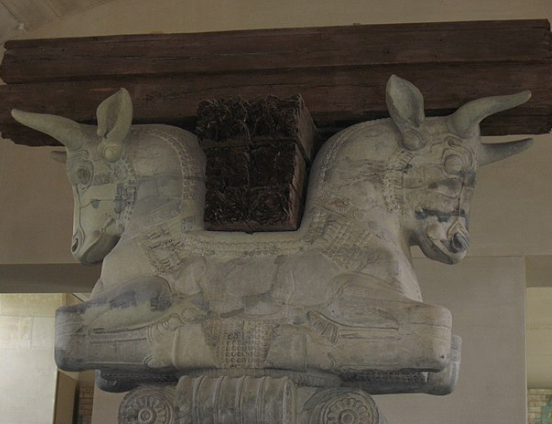
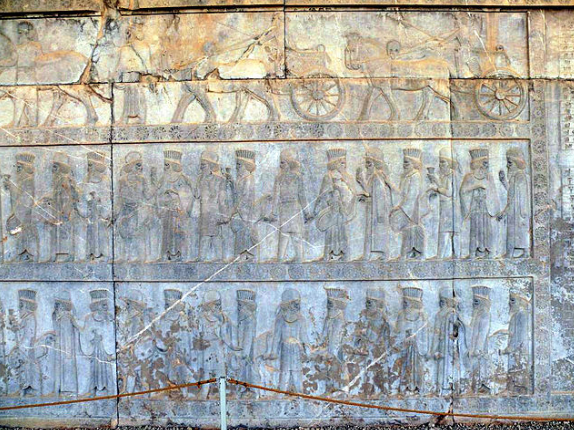

Kings and Gods Galore
As if the array of beasts and the long procession of people weren’t clear enough, the inscriptions written at the ends of the stairways tell you just how much power the Persian Empire once exerted. I wished I could have interpreted the words for myself, but I unfortunately needed some help from the web. In the translated text, the Persian King Xerxes glorifies himself by conveying that he was made king by the god Ahuramazda, and that he is “the king of kings.” Thus, Xerxes is not just a king, but the king who has influence over all the other kings and people in the world.
I also found the image of eight soldiers with a winged sun above their heads to be another possible message from the Persians. The placement of the sun may indicate the presence of a god above them, perhaps Mirtha, the god of the rising sun. So, on top of the impressive relief structure that shows their wide range of control, the Persians also seem to be insinuating that their power is upheld by the gods, which is a theme that I have encountered often in Mesopotamian art.
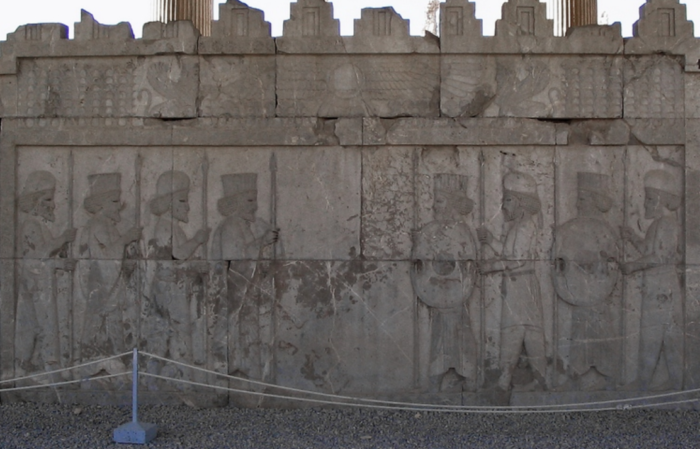

World Dominance or Worldly Influence?
One of the most remarkable places I have seen in the entirety of my traveling career was the Parthenon in Greece. That being said, as a travel blogger, it is in my nature to make comparisons between the structures that I visit. If I had looked at the Apãdana and the Parthenon before doing research on them, I might have thought “woah, the Persians copied the Greeks!” After doing research on these great buildings, and seeing them both with my own eyes, I am starting to believe that it may be the other way around. As argued by Margaret Cool Root, the social order construct, the upward convergence, and the architectural significance depicted in both the Apãdana reliefs and the Parthenon frieze suggest that the artists who worked on the frieze may have been influenced by the reliefs. These similarities can be interpreted by the traditional Athenian war scenes in the temple, which possibly allude to their triumph over the Persians in the wars. Perhaps the structural and thematic components shared between the frieze and temple are a response from the Greeks, as if to say that they, too, have great power.
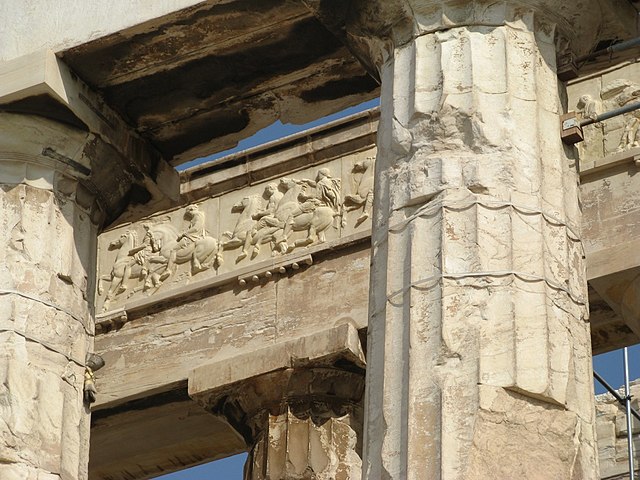
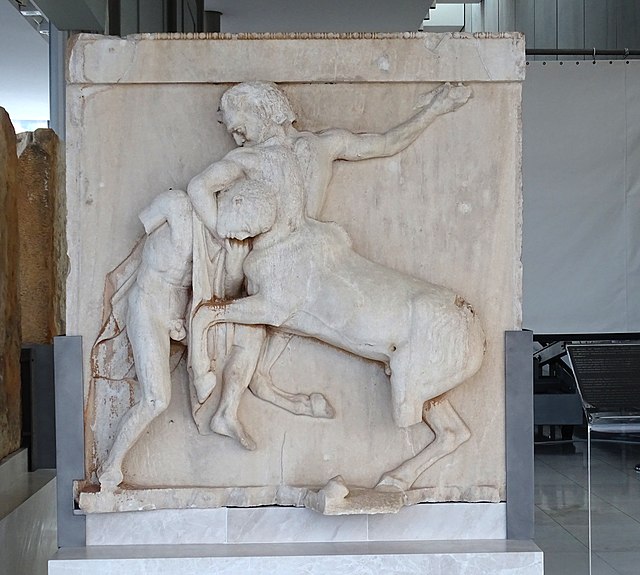
Until Next Time!
Stay tuned for next week’s post, where I will continue to explore the various connections between art of the past!
Byline: Hello! My name is Abby Hanson, and I am a sophomore at Colgate planning to major in biology. I have thoroughly enjoyed studying the Apãdana and other ancient structures because I have always wanted to travel around the world and see these places for myself. I now have a better understanding of the historical context of some of these places, and have an even deeper appreciation for them.
